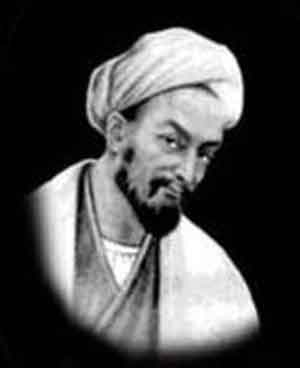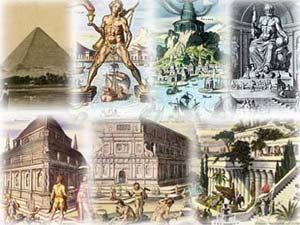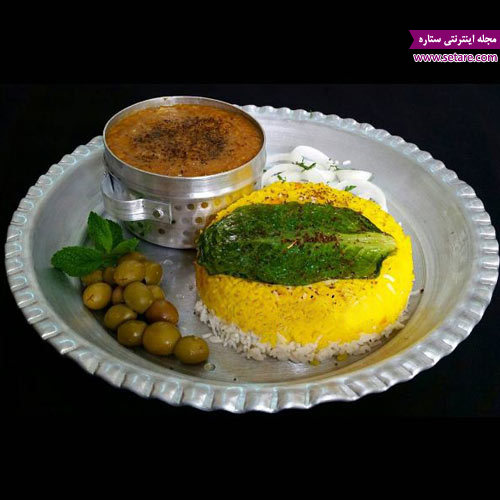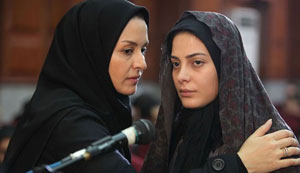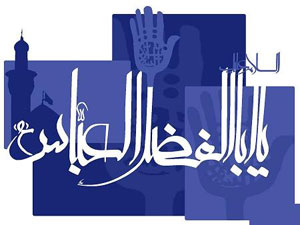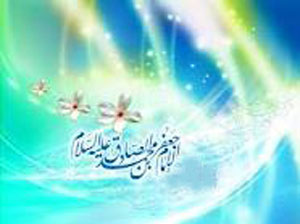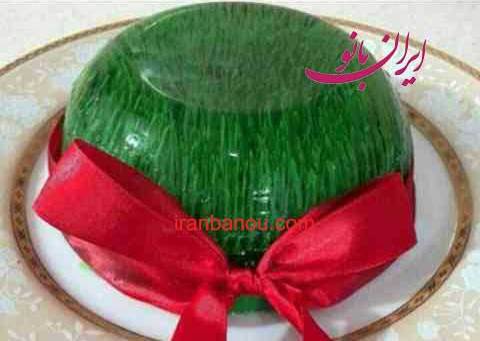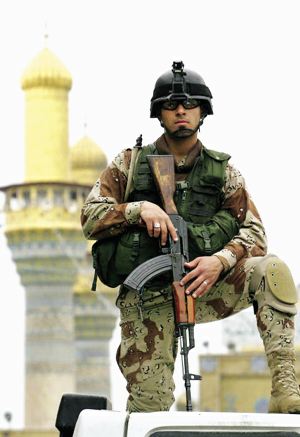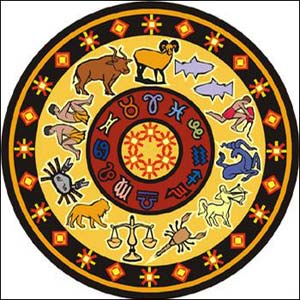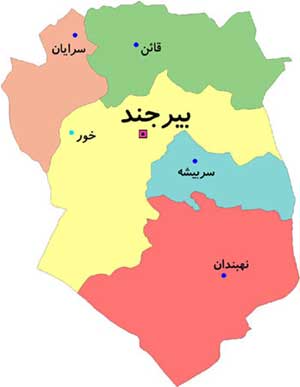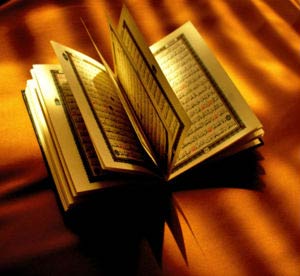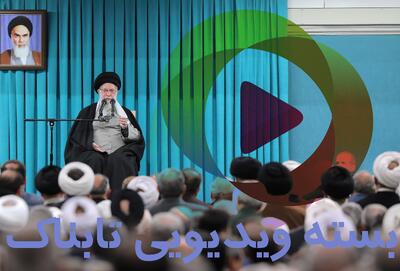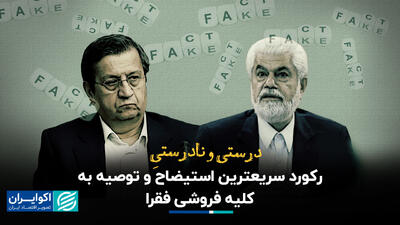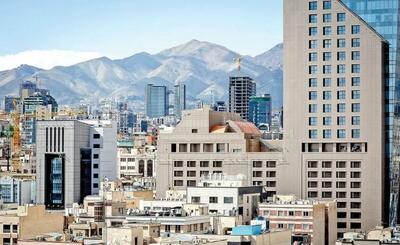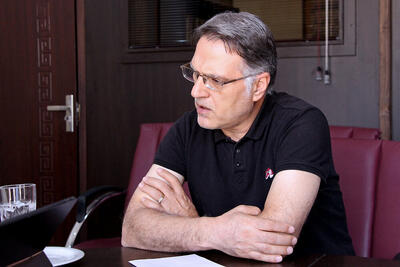یکشنبه, ۱۹ اسفند, ۱۴۰۳ / 9 March, 2025
«اهل هوا» در اسکاتلند: به یاد غلامحسین ساعدی (1936-1985)

گروه انسان شناسی اجتماعی دانشگاه سنت آندروز اسکاتلند ، همایش «اهل هوا: ایران، خلیج فارس و کشورهای همسایه» را در حوزه انسان شناسی با محوریت موضوع مطالعات مناسکی در خلیج فارس و کشورهای همسایه برگزار می کند. این همایش که برگزاری آن برعهده دکتر بیمن (مدیر گروه انسان شناسی دانشگاه مینه سوتای
امریکا و دکتر خسرونژاد (عضو گروه انسان شناسی دانشگاه سنت آندروز) است در روزهای دوم و سوم سپتامبر 2011- شهریور 1390) در همین شهر تشکیل می شود. هیئت علمی این همایش عبارتند از: آقایان دکتر بیمن، دکتر دیلی (دانشگاه سنت آندروز)، دکتر فکوهی (دانشگاه تهران)، دکتر کروان(مرکز ملی پژوهشهای علمی فرانسه)، دکتر خسرونژاد(دانشگاه سنت آندروز)، آقای میرتهماسب(انجمن مستند سازان ایران)، دکتر منتظر القلم(دانشگاه اصفهان)، آقای طیاب (فیلم ساز مستند) و دکتر وثوقی (گروه تاریخ دانشگاه تهران) هستند. در زیر خلاصه مقالات پذیرفته شده در این همایش را به زبان انگلیسی می خوانید و آدرس وبگاه رسمی این همایش نیز قابل دسترس است. از همکاران انسان شناسی و فرهنگ، افزون بر دکتر فکوهی مدیر سایت که در هیئت علمی این همایش مشارکت داشته است، مقالات خانم فرزانه سجاد پور مدیر گروه فرهنگ لری و آقای مظفر پاسدار شیرازی از همکاران گروه انسان شناسی اچرا و نمایش در این همایش ارائه شده اند.
University of St Andrews
The Department of Social Anthropology
Symposium
People of the Air: Iran, the Persian Gulf and Neighbouring Countries
In Memoriam: Gholam Hoseyn Saedi (1936-1985)
(2-3 September 2011)
Conveners
Prof. W. O. Beeman
(Chair, Dept. of Anthropology, University of Minnesota, USA)
Dr. P. Khosronejad
(Dept. of Social Anthropology, University of St Andrews)
Abstracts
William. O. Beeman
The Zar: Ritual or Performance
The Zar “cult” is one of the most interesting features of culture in the Gulf region. Its origins are unclear, but it has important affinities with other similar trance-possession practices in South Asia and Africa reaching as far as the Hamadsha practice of Morocco. In this paper I will analyze the Zar practice both as a ritual and as a performance. The success or failure of the Zar often rests on the skill of the Baba or Mama practitioner. The event, replete with drumming and chanting is aimed at reaching the Jinn who inhabit the individual and propitiating them. The Baba or Mama can only do this when in trance. Thus the performative aspect of the Zar is as important as the ritual aspect. Indeed, unless the performance succeeds the ritual fails. Performance in general is a human practice that binds individuals in a community. The Zar has this very profound effect. It is seen by outsiders as a cult because those involved with it return again and again to share the experience of participation. This paper draws on the limited literature on the Zar in the Gulf region, supplemented by my own fieldwork over 30 years in the Gulf where I have witnessed a number of Zar ceremonies and had the opportunity to interview participants.
Vahe S. Boyajian
From Muscat to Sarhadd: Variations of a Healing Ritual
The presentation focuses on the gwātī healing ritual practiced in the region of Sarhadd in Iranian Baluchistan. Though the gwātī ritual is widespread all over Baluchistan, its local varieties are quite interesting from the anthropological perspective.
The aim of the presentation is not the mere description of the ritual but rather is an attempt to understand the changes it has undergone, and the social imperatives that caused its adaptation to the Sarhaddi realities. According to local narratives originating from Oman (Muscat), the gwātī ritual has entered the Makkuran (Makran) region of Baluchistan with the migration waves from Persian Gulf and has been considered within the domain of pagan practices, later, of course, rooted among the population of Baluchistan professing Islam: "It has been inevitable, as gwāt (Balochi "wind") knows no limits and boundaries".
Gwātī in Sarhadd is a relatively new phenomenon, and it is practiced "in harmony with the Islamic traditions and faith". Meanwhile it is a constant source of income for the healers, although there is only one well-known sheykh, who has inherited the healing abilities and possesses a shajara that goes back to one of the most prominent Sufis, the founder of the Qadiriyya order, Abd al-Qadir Gilani.
The data has been collected during my recent fieldwork in Sarhadd, in autumn, 2010, and summer, 2011.
Adeleh Fakhri-Asfestani
Effect of Economic Activities and Presence of Economically Active Parties on Culture and Civilization: A Case Study of the Persian Gulf Region
The Persian Gulf has had its own cultural and historical importance for centuries even long before the discovery of oil in the early 20th century. From times immemorial, this region has always been considered as a crucial waterway and a commercial and economic hub by the great powers of the region and beyond it (Asadi, 2007: 56).
With all its grandeur and vastness, the Persian Gulf region has also housed a very rich culture which has had influence on other cultures and nations; it has perhaps been this very culture and its dimensions that have brought about economic growth and other nations’ desire for economic interaction with this region. Nevertheless, as times went by, the direction of this influence became inverse and the diversity of nations and cultures has increased such that this region’s rich culture has disappeared in confusion and amidst the multiplicity of cultures and traditions. This is especially true due to the emergence of modernity as the people of this region have lost their economic power. In addition, it should be noted that towards the 1960s and especially in the late 1970s, and 1977 in particular, the region witnessed a peak in the stabilization of industrial projects and thus the rush of people from different regions to this area which saw the interminglement of cultures and nations. The existence of specific and divergent cultures among economically active parties is observed when they are together and these juxtapositions result in the formation of popular culture. And this presence of economically active parties and the formation of popular culture engenders a conflict of tradition and modernity where the latter emphasizes the importance of the individual and not people’s traditional culture and their past. While the people in this region had no problems with popular culture, other sub-cultures showed resistance to it.
Monique Kervran
From Coast to Coast : Sohar (Oman), a Trade Harbor Founded by Arab Tribes Settled on Coastal Iran, at the beginning of the first Millennium A.D.
During the millennium preceding the advent of Islam, Persian dynasties controlled sporadically the opposite shore of the Persian Gulf. Conversely, fractions of Arab tribes migrated to Fars and Makran up to Sindh through a fairly badly known process and chronology.
The assumption that Sohar (Oman) was founded, in the 1st or 2nd c. AD, by Arab émigrés settled on the Iranian Coast (possibly Jask area) is based first on tribal linkages history, second on archaeological and ceramic data. The first occupation levels of the town appeared as seasonal and without building, suggesting encampments. However these levels yielded a great many fragments of southeast Iranian and Indian ceramics, as well as glass pieces resulting likely from the Red-Sea to India maritime trade. The foundation of Sohar gives witness of the double activity of these Arab nomad shepherds seasonally sailors and merchants, in a context of increasing maritime trade in the Persian Gulf, Oman Sea and Indian Ocean.
Pedram Khosronejad
Zar: An African Healing Ritual in the South of Iran
“The people of the air” (ahl-e hava) are the local and indigenous people who have fallen ill as a result of being targeted by one of the different “winds” (bad). “Winds” are strange, magical and ethereal forces or powers which are able to dominate human beings, and are omnipresent. No normal human has the power to resist them; therefore, targets should present the winds with offerings and resign themselves to what will befall them. Just like human beings, winds may be kind or cruel, blind or sighted, or even Muslim or infidel. When one of the winds finds its target, it will first mount the target (markab sakhtan) and then sooner or later will render him or her ill and “airy” (havayi). In order to relieve themselves from the pains and troubles brought upon them by the winds, patients should seek the “father” (baba) or “midwife” (mama) of the specific wind that is afflicting them. To bring down (payin avaradan) each wind and turn it into chaos (zirkardan), each “father” and each “midwife” should organise an assembly comprising special ceremonies (bazikardan), and it is during these ceremonies that the “fathers” and “midwives” will be able to draw out (payin avaradan, zirkardan) the wind. A ceremony, an offering (sofreh), blood; these are exactly the things that winds request from their targets. Following such ceremonies, these winds will become clear (saf) and regain their sense of sight (binayi), and their targets will join the group “the people of the wind” (ahl-e hava). In this paper we will present general information concerning the “people of the air” (ahl-e hava) in the area of the Persian Gulf in the South of Iran, as well as specifically addressing one of the types of winds, namely “bad-e zar”.
Asghar Montazerolghaem
The Political, Social, Cultural, and Economic Developments of the Persian Gulf in the Islamic Era
The Persian Gulf has enjoyed prominent significance for both its local residents and foreign states throughout the eons due to its geographic and geopolitical stance, rich energy resources, and the consumption markets of its inhabitants. In the pre-Islamic era, Ilami and Iranian governments ruled over its coasts except for one century when it was under Greek sovereignty. Following the advent of Islam and as of 629 AD, the Sassanid gradually lost their control over this waterway allowing room for the hegemony of Islamic caliphs. Later on from the 10th century up to the raid of the Portuguese, the Persian Gulf was administered by Iranian governments. Adopting a descriptive-analytical approach, this paper reviews the major pertinent historical and geographic literature focusing on the political, social, cultural, and economic developments of the Persian Gulf and investigates into the reasons for the historical continuity and change of the region.
Ali Parsa
Sailing Tradition in the Persian Gulf
Dhow is the English name for many kinds of traditional Middle Eastern, African and Indian wooden ships and boats. The term is not used in those areas by the native people. All dhows, regardless of their shape and size use what is known in the west as Lateen sail. The term originates from the Mediterranean region and is known to come from Italian “Vela a la Trina”, meaning a triangular sail. In fact most dhow sails are not triangular but trapezoidal, or a truncated triangle.
Traditionally the sails are made from cotton cloths that almost invariably come from India. The sail hangs on a long spar or yardarm called Parvand in Persian. Parvand is raised and lowered on the mast by main halyards called bornadeh. There is a smaller triangular sail in front of the main sail and is called jib. It is almost exactly like the jib on a modern European vessel. I am not sure if this sail has come from the western sailing tradition into the Persian Gulf and India or vice versa. Boum used to be the main ocean-going vessel in the Persian Gulf and the Indian Ocean. Boums are ships with capacity of 200 tons to 800 tons. Although they are still used as launchs, i.e. motorized dhows, they are no longer built.
Bandar Kong used to be the hub of Persian Gulf sailing and the hometown for many famous sailors up till the end of 1970s. The long trips, or Safar-e Gapp were commercial in nature and usually started at the late August or early September each year. They started by going to the western-most part of the Persian Gulf, to Basra, to buy large quantities of locally produced dates. They sailed all the way to Calicut and Cochin in south India. They sold the dates and instead bought teak timber for future
dhow building. They also bought locally produced terra cotta tiles. From there they crossed the Indian Ocean to the western coast of Africa. The terra cotta tiles were
sold. Hiring local workers, they went into the tropical jungles of Kenya and cut timber, mainly sandalwood to be brought back to Bandar Kong for boat construction and also used in buildings. Finally around April they started their return trip to Bandar Kong and arrived around May.
The returning ships were greeted by a line dance and song ceremony named Rezif. Interestingly enough even today when this ceremony is performed it includes songs in Swahili language, reminder of their times in the African ports. With the introduction of the diesel powered dhows in the 1950s and the change in the economy of the Persian Gulf due to the oil revenues, the sailing tradition of Bandar Kong went into decline and less and less captains did long journeys as the old times. Dhows with sails are no longer seen in the Iranian side of the Persian Gulf.
Mozaffar Pasdar-Shirazi
The Women of the Persian Gulf Region in Tazieh: A Case Study of Booshehr
Tazieh, or passion play, is a ritual drama particular to Shiites which has acquired profound theatrical dimensions in Iran’s cultural geography. This ritual is performed to honor the martyrdom of Imam Hossein (the third Shiite imam) and his fellow companions and family members in the Battle of Karbala. The prime purpose of the act, both for the performers and the audience, is to be blessed by the intercession (shafa’a) of Imam Hossein in the Hereafter. As religious beliefs dissuade women from making public appearances and further strictly forbid their singing, they are not authorized to perform in tazieh; as a result, men perform the role of women too. This case study of the Booshehr region, however, shows that unlike the other parts of Iran including the Persian Gulf region (e.g. Hormozgan, Khoozestan, and even Bahrain), women perform in tazieh as the women of Karbala and also chant in the process. The concentration of southern Iranian harbors in the Booshehr region and the economic and commercial prosperity of this region have brought about cultural and economic interactions among diverse nationalities, ethnicities, tribes, and religions from the Europeans to the Africans and the Indians. At the same time, this economic prosperity has led to the immigration of Arabs, Lors, and other Iranian ethnicities into the region. These people have shared different aspects of their cultures, rituals, rites, and beliefs and in fact the performance of women in tazieh in Booshehr can be considered as one of the results brought about by these cultural interactions.
Azam Riahi
Migration from Booshehr to the Arab States of the Persian Gulf during the Reign of Reza Shah Pahlavi
The geographical and trade stance of Booshehr in the south of Iran along the Persian Gulf has always drawn various groups and tribes to this region from times immemorial. Consequently, the social structures of this region have been subject to more change by nondomestic forces compared to Iran’s other areas. In contemporary times, the political and trade presence and activity of the Europeans in the region thereby having boosted foreign trade and also industrial progress has introduced changes in the social and demographic structure; the latter, in turn, led to the economic migration of a number of the people in the region to the Arab states of the Persian Gulf and Oman Sea due to the proximity of these sheikhdoms to Booshehr. At the same time, certain special advantages and bonuses granted to the foreign workforce, the British and Indians in particular, increased the trend of the migration of non-indigenous individuals to the region. This paper endeavors to identify the factors underlying migration in this region through a content analysis of the documents remaining from the era of Reza Shah Pahlavi’s reign and further looks into the outcomes of this migration on the social structure of the region.
Farzaneh Sajadpoor and Ebrahim Jamali
Fairies in the Folklore of Booshehr
There are many stories and narratives which give life to the legendary fairy and make her an inseparable part of everyday life in folklore. The term Pari (which means fairy) has been mentioned in Zoroastrian texts as one of Ahriman’s allies. Accordingly, researchers presume that due to a change in religious attitudes, the fairy which is the goddess of fertility in pre-Zoroastrian times has recreated her status in Zoroastrian mythology as a negative figure. However, what is astonishing is the trace of the fairy in the views and beliefs of common people, that is those who still think favorably of this ancient goddess. A fairy has a mysterious figure and therefore cannot be judged as totally good or bad. She is a beautiful woman and like Anahiti brings fertility; she is, on the other hand, an enticing woman and like "Jahi" has sworn to delude men. In short, a fairy's contradictory nature of being both good and bad and her eternal presence in the believers' minds indicate the importance and status of this ancient goddess.
A fairy is more popular in the coastal regions of the Persian Gulf than the other parts of Iran. If a fairy is associated with qanats (tunnels dug to carry water) and springs in central Iran, she introduces herself as a mermaid in the regions near the Persian Gulf. What is notable in the folklore of Booshehr is the natives’ firm belief in the real presence of various fairies in their everyday life.
This paper sets out to study the different types of fairies in the folklore of Booshehr and by classifying them, it examines their differences and similarities. It will also deal briefly with the concept of fairies in Iranian culture.
Conference website:
http://www.st-andrews.ac.uk/anthropology/nafa/gulf/conference/
For booking your place and registration, please visit:
http://www.st-andrews.ac.uk/philosophy/anthropology/nafa/registration/
For Enquiries, additional information and details, please contact:
Dr Pedram Khosronejad (nafa2011@st-andrews.ac.uk)
ایران مسعود پزشکیان دولت چهاردهم پزشکیان مجلس شورای اسلامی محمدرضا عارف دولت مجلس کابینه دولت چهاردهم اسماعیل هنیه کابینه پزشکیان محمدجواد ظریف
پیاده روی اربعین تهران عراق پلیس تصادف هواشناسی شهرداری تهران سرقت بازنشستگان قتل آموزش و پرورش دستگیری
ایران خودرو خودرو وام قیمت طلا قیمت دلار قیمت خودرو بانک مرکزی برق بازار خودرو بورس بازار سرمایه قیمت سکه
میراث فرهنگی میدان آزادی سینما رهبر انقلاب بیتا فرهی وزارت فرهنگ و ارشاد اسلامی سینمای ایران تلویزیون کتاب تئاتر موسیقی
وزارت علوم تحقیقات و فناوری آزمون
رژیم صهیونیستی غزه روسیه حماس آمریکا فلسطین جنگ غزه اوکراین حزب الله لبنان دونالد ترامپ طوفان الاقصی ترکیه
پرسپولیس فوتبال ذوب آهن لیگ برتر استقلال لیگ برتر ایران المپیک المپیک 2024 پاریس رئال مادرید لیگ برتر فوتبال ایران مهدی تاج باشگاه پرسپولیس
هوش مصنوعی فناوری سامسونگ ایلان ماسک گوگل تلگرام گوشی ستار هاشمی مریخ روزنامه
فشار خون آلزایمر رژیم غذایی مغز دیابت چاقی افسردگی سلامت پوست




